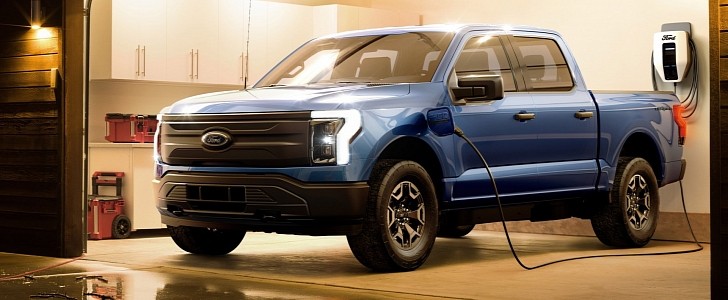Bidirectional charging is the new kid on the block today, with more and more EVs supporting the standard. But to function properly, the new feature needs support from the utility providers, which is why PG&E partnering with Ford and GM is good news.
Pacific Gas and Electric (PG&E) is the main supplier of electricity in Northern and Central California, an area that also sees the highest EV adoption in the country. Roughly one in five electric vehicles in the U.S. are on the road in the PG&E service area. It makes sense for the electricity supplier to partner with EV makers for the benefits of both car owners and the utility company.
Of course, most EVs on the road in California and everywhere else are made by Tesla, but it’s hard to imagine the electric startup offering bidirectional charging. This stems from the fact that Tesla also makes the Powerwall products and embracing bidirectional charging would hurt its energy business. So PG&E is left with GM and Ford for now, even though the mighty carmakers don’t have many electric vehicles on the roads.
GM offers bidirectional charging for the Chevrolet Silverado EV, a feature that is called PowerBase, while Ford has a similar function on the F-150 Lightning, called Intelligent Backup Power. Both vehicles can power external devices and even houses in case of power outages. The scope of the trials is figuring out how to use smart charging and load balancing to automatically coordinate between the EV, home, and PG&E’s electric supply.
Similar trials were announced by PG&E years ago when the BMW i3 was launched, but they never came to fruition. This might also be the case with GM and Ford vehicles, but we’ll have to wait and see. For what is worth, there are not many such vehicles in California at the moment, but GM is confident will have one million EVs on the roads by the end of 2025. Ford plans for at least 600,000 total EV production capacity by next year, so we assume they will have a similar target in the U.S.
Of course, most EVs on the road in California and everywhere else are made by Tesla, but it’s hard to imagine the electric startup offering bidirectional charging. This stems from the fact that Tesla also makes the Powerwall products and embracing bidirectional charging would hurt its energy business. So PG&E is left with GM and Ford for now, even though the mighty carmakers don’t have many electric vehicles on the roads.
GM offers bidirectional charging for the Chevrolet Silverado EV, a feature that is called PowerBase, while Ford has a similar function on the F-150 Lightning, called Intelligent Backup Power. Both vehicles can power external devices and even houses in case of power outages. The scope of the trials is figuring out how to use smart charging and load balancing to automatically coordinate between the EV, home, and PG&E’s electric supply.
Similar trials were announced by PG&E years ago when the BMW i3 was launched, but they never came to fruition. This might also be the case with GM and Ford vehicles, but we’ll have to wait and see. For what is worth, there are not many such vehicles in California at the moment, but GM is confident will have one million EVs on the roads by the end of 2025. Ford plans for at least 600,000 total EV production capacity by next year, so we assume they will have a similar target in the U.S.








